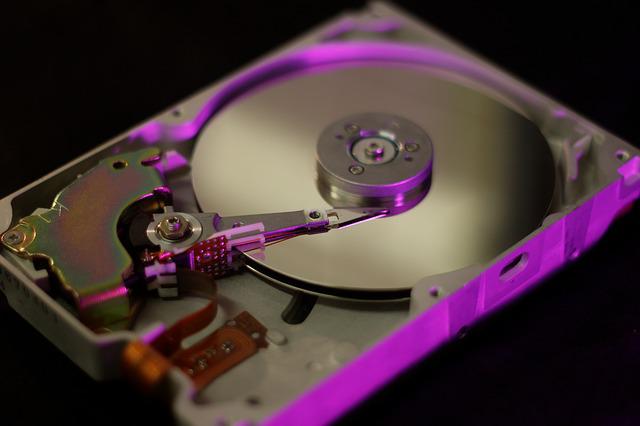Difference between hard disc and SSD
Difference between HDD and SSD
Both hard drives and fixed-state drives are defined as a non-volatile type of storage devices used by computers, laptops, etc for data and software storage. The big difference between HDD and SSD lies in the technology used by them to store data. Basically, both storage devices use distinctive technology to store and retrieve data.
HDD is known as an electromechanical device containing movable disks called dishes for magnetically storing data. On the contrary, SSD is a hard-state device that is free of flash drives but has integrated circuits in which data is stored.
HDD is an old technology that exists within the host to store software and data while SSD is the result of technological advances after semiconductor chips arrive.
Let's learn in detail about HDD Vs SSD
- Electrical engineering device with moving disk (dish), spindle, metal tray. Solid state device with electronic units such as an integrated circuit.
- Cummins are relatively low
- Storage capacity offers more physical space (from 250GB to 20TB) relatively less physical space (120GB to 30TB)
- High energy consumption is low
- Expensive inexpensive cost
- Durability Less Durable Relatively More Durable
- Read/Write Short Long Time
- Speed is slow (measured by the number of cycles per minute, i.e. revolution per minute) is fast (measured in MB/s)
- Produce less noise compared to hard drives.
- Less shock resistance
- Magnetic effect does not exist
- Size, weight, large size and heavy machine. Small size and lightweight device.
- Relatively less heat production
- The main use of storing user data such as photos, files, videos, audio recordings, etc to store software.
Definition of HDDs
HDD means hard drive, a mechanical device used to store data. In HDD, the data is permanently stored inside a circular disc called a dish by creating magnetic changes within the disk. The data on the disk is read and typed using the arm containing several heads (power transformers) and according to the movement the different data in the disk is accessed.
HDD hard drive is known as an old way to store data and information permanently. Due to the components included in their manufacture, they are generally suitable for storing such kinds of data that include less frequent access, such as photos, videos, audio recordings, business files, etc.
The reading and writing process within the device is done with the help of a disc head through which the pattern on the disk (reading process) or a change in pattern (writing process) is sensed.
Standard sizes for hard drives are 3.5 inches and 2.5 inches for desktops and laptops respectively. The rotation speed on the desktop is about 7,200 rpm which can store up to 6 terabytes of data. While the device in the laptop is about 5,400 rpm allowing storage of up to 2TB.
With technological advances, memory chips replaced magnetic discs that improved energy consumption and shock resistance.
Definition of SSD
SSD stands for Solid State Drive which is flash-based storage such as RAM which includes electronic components but no moving mechanical parts to store data and information. It is a semiconductor device that provides longer life than hard drives with the reliable and noise-free operation.
It provides a facility to access data at a faster rate due to the technology used. The SSD consists of several NAND memories connected to each other through 8-bit buses referred to as channels for connecting memories to the console. Multiple flash memories make it easier to save more storage space besides providing better reading/writing performance.
Access to different memory channels is scheduled by the memory controller. The memory controller helps maintain appropriate communication between host and memories. It also manages data transfer efficiently.
One factor limiting the use of SSD in laptops and desktops is their high cost. The reason for this is that the solid state drive, for the same storage capacity, is about 3 to 4 times more expensive than the hard drive. However, due to its various useful factors, the NAND flash memory-based SSD drive has gained great importance as secondary memory in modern computing systems.
For major differences between HDD and SSD
A hard drive is an electro-mechanical device consisting of moving machines in which data or information is magnetically stored. In contrast, SSD is a solid-state device consisting of electronic components such as integrated data storage services.
The storage capacity provided by the two also serves as a key factor to distinguish between HDD and SSD. The hard drive offers an actual space of about 250GB to 20TB, and this is relatively higher than that offered by the SSD which is about 120GB to 30TB.
Because there are turntables (disks) in the hard drive, the chances of corrosion and damage are higher due to the risk of mechanical failure. While SSD has fixed parts, it is relatively less susceptible to repeated corrosion.
The mechanical parts of the hard drive (HDD) make it more shock sensitive compared to the SSD disk. Therefore, SDDs are said to be more shockproof than hard drives.
The noise generated during operation is lower in the case of SSD due to the lack of moving components in it. But hard drives during operation generate a great deal of noise.
Because of the presence of magnets, there is a magnetic effect in the hard drive. Thus, they are more likely to damage or damage data when located near magnets than magnetic components-free SDD. This makes SSD relatively more reliable than HDD.
Because devices with moving parts require relatively more energy than those consisting of non-moving parts, the hard drive consumes more energy than the SSD.
The full operation of the hard drive appears depending on the rotating dishes and magnetic drives, so the start speed of the hard drive is relatively slower than the hard state drive. More specifically, according to Intel, fixed-state drives provide 8 times faster-running speed than hard drives.
These two types of data storage devices use different techniques for reading/writing processes. The hard drive involves a sequenced way of transmitting data while the same is random in SSD, allowing data to be transmitted at a faster rate.
HDD is a huge oversized device because of the type of components it carries. However, fixed-state drives are lightweight and small-sized devices.
When considering the cost of the two devices, it is noted that SSD is technologically more advanced than HDD and therefore SSD is relatively more expensive than HDD.
During the movement of components, heat production is relatively more than the state of fixed components. For this reason, the resulting heat within the hard drive is higher than the heat generated in the solid-state drive.
Thus, through this discussion, one can conclude that both hard drives and fixed-state drives are non-volatile storage devices that show significant variability in how they are manufactured and operated. These factors lead to several points of differentiation between the two in terms of cost storage space and operating efficiency.







